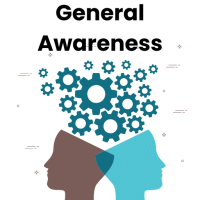SSC CGL Exam > SSC CGL Questions > When the decimal number 16 is converted to b...
Start Learning for Free
When the decimal number 16 is converted to binary number, how many binary digits are needed?
- a)4
- b)3
- c)5
- d)7
Correct answer is option 'C'. Can you explain this answer?
Most Upvoted Answer
When the decimal number 16 is converted to binary number, how many bi...

1610 = 100002
So, 5 is the correct answer.
Free Test
FREE
| Start Free Test |
Community Answer
When the decimal number 16 is converted to binary number, how many bi...
To convert a decimal number to a binary number, we divide the decimal number by 2 repeatedly until the quotient becomes 0. The binary number is then formed by taking the remainders in reverse order.
Let's apply this process to the decimal number 16:
1. Divide 16 by 2:
- Quotient = 8
- Remainder = 0
2. Divide 8 by 2:
- Quotient = 4
- Remainder = 0
3. Divide 4 by 2:
- Quotient = 2
- Remainder = 0
4. Divide 2 by 2:
- Quotient = 1
- Remainder = 1
5. Divide 1 by 2:
- Quotient = 0
- Remainder = 1
Now, let's write the remainders in reverse order: 10000
The binary representation of the decimal number 16 is 10000.
Therefore, 5 binary digits are needed to represent the decimal number 16.
Explanation:
- When we divide a number by 2 repeatedly, the number of divisions needed represents the number of binary digits required.
- In this case, we needed 5 divisions to reach a quotient of 0, which means 5 binary digits are needed.
- Each division represents a place value in the binary number system, starting from the rightmost digit as 2^0, then 2^1, 2^2, and so on.
- In our example, the rightmost digit (2^0) is 1, followed by 0, 0, 0, and 0.
- The binary representation of 16 is 10000, which requires 5 binary digits.
Let's apply this process to the decimal number 16:
1. Divide 16 by 2:
- Quotient = 8
- Remainder = 0
2. Divide 8 by 2:
- Quotient = 4
- Remainder = 0
3. Divide 4 by 2:
- Quotient = 2
- Remainder = 0
4. Divide 2 by 2:
- Quotient = 1
- Remainder = 1
5. Divide 1 by 2:
- Quotient = 0
- Remainder = 1
Now, let's write the remainders in reverse order: 10000
The binary representation of the decimal number 16 is 10000.
Therefore, 5 binary digits are needed to represent the decimal number 16.
Explanation:
- When we divide a number by 2 repeatedly, the number of divisions needed represents the number of binary digits required.
- In this case, we needed 5 divisions to reach a quotient of 0, which means 5 binary digits are needed.
- Each division represents a place value in the binary number system, starting from the rightmost digit as 2^0, then 2^1, 2^2, and so on.
- In our example, the rightmost digit (2^0) is 1, followed by 0, 0, 0, and 0.
- The binary representation of 16 is 10000, which requires 5 binary digits.

|
Explore Courses for SSC CGL exam
|

|
Similar SSC CGL Doubts
Question Description
When the decimal number 16 is converted to binary number, how many binary digits are needed?a)4b)3c)5d)7Correct answer is option 'C'. Can you explain this answer? for SSC CGL 2025 is part of SSC CGL preparation. The Question and answers have been prepared according to the SSC CGL exam syllabus. Information about When the decimal number 16 is converted to binary number, how many binary digits are needed?a)4b)3c)5d)7Correct answer is option 'C'. Can you explain this answer? covers all topics & solutions for SSC CGL 2025 Exam. Find important definitions, questions, meanings, examples, exercises and tests below for When the decimal number 16 is converted to binary number, how many binary digits are needed?a)4b)3c)5d)7Correct answer is option 'C'. Can you explain this answer?.
When the decimal number 16 is converted to binary number, how many binary digits are needed?a)4b)3c)5d)7Correct answer is option 'C'. Can you explain this answer? for SSC CGL 2025 is part of SSC CGL preparation. The Question and answers have been prepared according to the SSC CGL exam syllabus. Information about When the decimal number 16 is converted to binary number, how many binary digits are needed?a)4b)3c)5d)7Correct answer is option 'C'. Can you explain this answer? covers all topics & solutions for SSC CGL 2025 Exam. Find important definitions, questions, meanings, examples, exercises and tests below for When the decimal number 16 is converted to binary number, how many binary digits are needed?a)4b)3c)5d)7Correct answer is option 'C'. Can you explain this answer?.
Solutions for When the decimal number 16 is converted to binary number, how many binary digits are needed?a)4b)3c)5d)7Correct answer is option 'C'. Can you explain this answer? in English & in Hindi are available as part of our courses for SSC CGL.
Download more important topics, notes, lectures and mock test series for SSC CGL Exam by signing up for free.
Here you can find the meaning of When the decimal number 16 is converted to binary number, how many binary digits are needed?a)4b)3c)5d)7Correct answer is option 'C'. Can you explain this answer? defined & explained in the simplest way possible. Besides giving the explanation of
When the decimal number 16 is converted to binary number, how many binary digits are needed?a)4b)3c)5d)7Correct answer is option 'C'. Can you explain this answer?, a detailed solution for When the decimal number 16 is converted to binary number, how many binary digits are needed?a)4b)3c)5d)7Correct answer is option 'C'. Can you explain this answer? has been provided alongside types of When the decimal number 16 is converted to binary number, how many binary digits are needed?a)4b)3c)5d)7Correct answer is option 'C'. Can you explain this answer? theory, EduRev gives you an
ample number of questions to practice When the decimal number 16 is converted to binary number, how many binary digits are needed?a)4b)3c)5d)7Correct answer is option 'C'. Can you explain this answer? tests, examples and also practice SSC CGL tests.

|
Explore Courses for SSC CGL exam
|

|
Signup to solve all Doubts
Signup to see your scores go up within 7 days! Learn & Practice with 1000+ FREE Notes, Videos & Tests.























